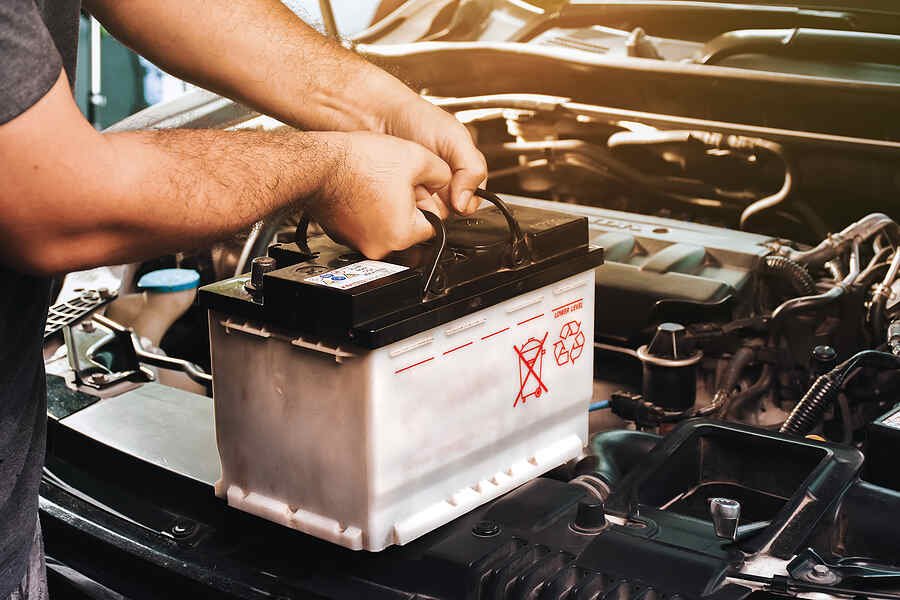With the advancement of technology, remote car control has become increasingly popular – and achievable. Controlling your car vai smartphone is a new level of convenience for drivers and owners.
For this, you don’t required any advance knowledge. Just the basics is enough and eventually you will get used to the process of controlling your car. In this article we have convered everything in short that you need to follow to control your car via smartphone.
Steps to Follow to Control Your Car via Smartphone
In just 12 steps, you can be in complete control of your car from miles away.
Step 1: Gather the necessary supplies. You will need a smartphone, a compatible device that connects to your car’s onboard diagnostics port (OBD-II), and an app for remote car control.
Step 2: Download the app onto the phone. It should be available on both iOS and Android app stores. Once installed, launch the application and create an account with your login information.
Step 3: Connect the smartphone to the OBD-II device using Bluetooth or Wi-Fi. Most cars are equipped with an OBD-II port that allows you to connect external devices such as these.
Step 4: Input your car information into the app. This includes make, model, year, and other pertinent details about the vehicle so that it can recognize it properly when connected.
Step 5: Sync the OBD-II device with the app on your phone by entering its unique ID number into the appropriate field within the app’s settings menu.
Step 6: Set up any security measures desired for accessing remote control features, such as password protection or two-factor authentication via text message or email verification codes, depending on which method you prefer.
Step 7: Ensure that you have adequate cellular coverage where you plan to use remote car control access points such as parking lots and garages. Otherwise, it may not work without a strong signal.
Step 8: Test out basic functions before attempting more complex tasks like unlocking/locking doors remotely or starting/stopping engines while away from home.
This can be done by visiting nearby locations and trying out various functions while still within close proximity to the vehicle, so any issues can be easily addressed even if you are nowhere near where you live.
You can take images with your smartphone to have a visual way to track everything. And in the case of too many pictures and clutter on the device, do not forget to get rid of them.
Step 9: Try out more advanced features when ready such as viewing live diagnostics data or scheduling maintenance reminders – all from anywhere in the world.
Step 10: Add additional things like emergency assistance alerts or automatic engine shut offs if needed for added peace of mind while traveling far from home base (for instance, if theft is a concern).
Step 11: Double check all security protocols are active before leaving home so unauthorized access is not possible during extended travels.
Step 12: Make sure all software updates are applied on a regular basis for optimal performance and maximum security against potential threats or vulnerabilities in order to keep you safe and sound no matter where in the world you may roam with remote car control
5 Benefits of Controlling the Car via a Smartphone
Controlling your car with a smartphone offers a variety of benefits that can improve convenience and safety while driving, making it an invaluable tool to have in the vehicle.
1. Convenience
Convenience is the standout advantage.
With this technology, you won’t need to fumble around with keys or remotes anymore; instead, you can simply use the smartphone to lock, unlock, start, and even drive your car.
Plus, if you ever forget where you parked, some cars come with a feature that helps you find it quickly. That way, there is the option to get back behind the wheel faster than ever before.
2. Security
Another major advantage is improved security.
Smartphone-controlled cars offer robust security features that protect against unauthorized access or tampering from outside sources.
Many also offer theft prevention capabilities, such as remote engine shutoff and anti-theft alarms that sound when someone attempts to break into or steal the car.
3. Efficiency
Smartphone control also makes driving more efficient. For example, many models come equipped with neat stuff like automatic climate control and pre-programmed routes that help optimize fuel efficiency and reduce emissions while ensuring that you get to your destination on time.
Furthermore, some of these systems can detect traffic congestion ahead of time and reroute accordingly so you don’t get stuck unnecessarily in bumper-to-bumper traffic.
4. Safety
In addition to improved convenience and security, vehicle control via a smartphone can also increase safety on the road by helping prevent drowsy driving accidents or collisions due to distractions like texting while driving or using mobile devices for other purposes during transit.
Smartphone-controlled cars also offer advanced driver assistance systems (ADAS) such as lane departure warnings which alert drivers when they drift out of their lane without signaling first—helping them stay safe on the roads at all times.
5. Maintenance Tracking
Finally, the setup makes it much easier to keep track of maintenance tasks like oil changes or tire rotations—and even provides helpful reminders so those tasks don’t fall through the cracks.
Final Words
Some vehicles allow users to monitor diagnostic codes right from their phones, so they know exactly what needs fixing before they hit the road again. Remember, you have to ensure that your smartphone application is compatible with your car before using such features. Moreover, don’t forget that this technology requires high-security measures too. Now you are ready to control your car and enjoy all benefits.
Recommended Posts:















